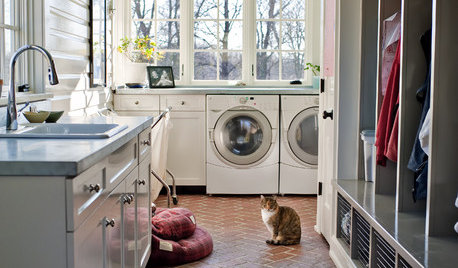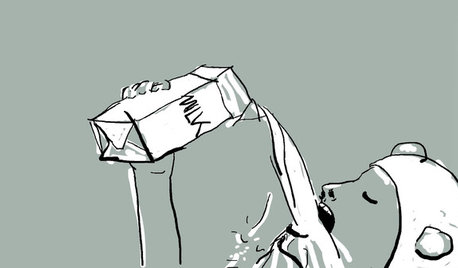Help - Basement Floor Drain Overflowing when doing laundry
pcjs
16 years ago
Featured Answer
Sort by:Oldest
Comments (13)
pcjs
16 years agoRelated Professionals
Feasterville Trevose Kitchen & Bathroom Remodelers · Bloomingdale Kitchen & Bathroom Remodelers · Creve Coeur Kitchen & Bathroom Remodelers · Niles Kitchen & Bathroom Remodelers · Olney Kitchen & Bathroom Remodelers · Omaha Kitchen & Bathroom Remodelers · Paducah Kitchen & Bathroom Remodelers · Port Arthur Kitchen & Bathroom Remodelers · Rochester Kitchen & Bathroom Remodelers · Schiller Park Kitchen & Bathroom Remodelers · Spokane Kitchen & Bathroom Remodelers · Sun Valley Kitchen & Bathroom Remodelers · Trenton Kitchen & Bathroom Remodelers · Tulsa Kitchen & Bathroom Remodelers · Upper Saint Clair Kitchen & Bathroom Remodelersdavidandkasie
16 years agojakethewonderdog
16 years agonikkikangas_yahoo_com
16 years agopcjs
16 years agolazypup
16 years agoBrewbeer
16 years agopcjs
16 years agolazypup
16 years agopjb999
16 years agopjb999
16 years agobndavis_hester
7 years agolast modified: 7 years ago
Related Stories

HOUSEKEEPINGAnother Independence Day: When Kids Can Do Their Laundry
Set yourself free and give your child a valuable life skill at the same time
Full Story
ORGANIZINGDo It for the Kids! A Few Routines Help a Home Run More Smoothly
Not a Naturally Organized person? These tips can help you tackle the onslaught of papers, meals, laundry — and even help you find your keys
Full Story
HOUSEKEEPINGWhen You Need Real Housekeeping Help
Which is scarier, Lifetime's 'Devious Maids' show or that area behind the toilet? If the toilet wins, you'll need these tips
Full Story
FLOORSWhat to Ask When Considering Heated Floors
These questions can help you decide if radiant floor heating is right for you — and what your options are
Full Story
SELLING YOUR HOUSE10 Low-Cost Tweaks to Help Your Home Sell
Put these inexpensive but invaluable fixes on your to-do list before you put your home on the market
Full Story
FUN HOUZZWhat You Do When There’s No One Around
Ice cream binges, air guitar concerts, napping in the closet. Houzzers worldwide disclose their quirky secret indulgences
Full Story
WINE CELLARS8 Wine Cellars Overflowing With Artful Storage
Give your wine collection a high-end home, with a prefab or custom racking system as posh as you please
Full Story
SELLING YOUR HOUSE10 Tricks to Help Your Bathroom Sell Your House
As with the kitchen, the bathroom is always a high priority for home buyers. Here’s how to showcase your bathroom so it looks its best
Full Story
ORGANIZINGGet the Organizing Help You Need (Finally!)
Imagine having your closet whipped into shape by someone else. That’s the power of working with a pro
Full Story
SMALL SPACESDownsizing Help: Storage Solutions for Small Spaces
Look under, over and inside to find places for everything you need to keep
Full StoryMore Discussions








jakethewonderdog